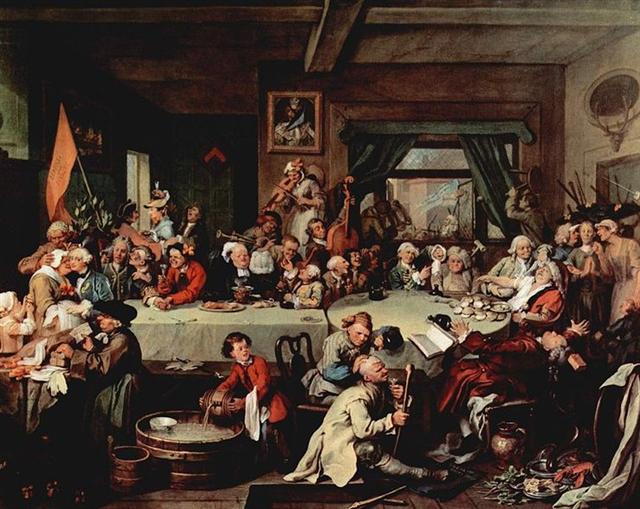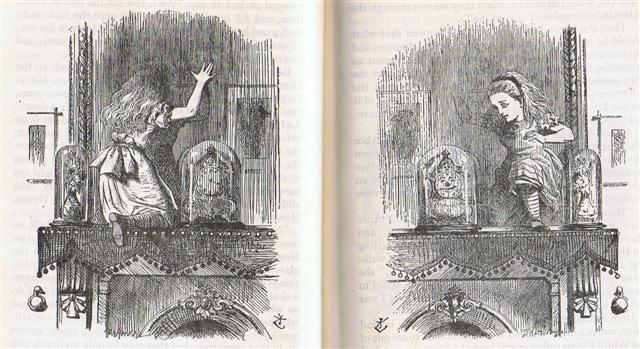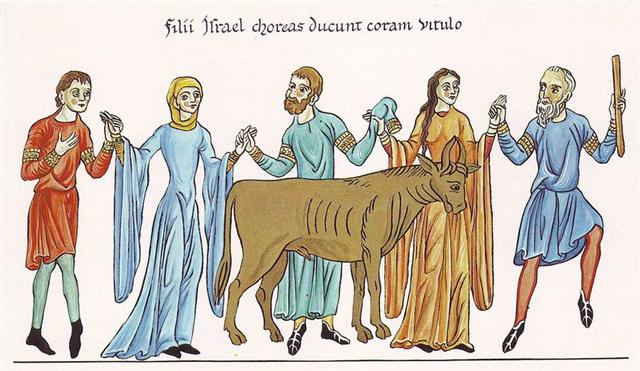86. According to Manuscript E the Explorers sailed away from their old homeland in April 25 and half a year later, in October 25, they returned home: ... On the twenty-fifth day of the first month (Vaitu Nui), Ira and Makoi set sail; on the first day of June ('Maro'), the bow of Ira's canoe appeared on the distant horizon, came closer and closer on its course, and sailed along, and finally (one) could see the (new home) land ... [E:17] ... Ira, Raparenga, Uure, Nonoma, and Ringiringi got up and left the 'Dark abyss of Hau Maka' (i.e., Rano Kau), arrived at Hanga Te Pau, put the canoe into the water, and sailed off to Hiva, to Maori. Ira left on the twenty-fifth day of the month of October (Tangaroa Uri). When Ira's canoe reached the islets (off the southwestern coast), Makoi (who was staying behind) shouted the following (after him): Eight lands (are there), one has been found (or, an eighth land has been found for the first time, evaru kainga katahi i revaa), that is, Te Pito O Te Kainga. During the fast journey, one cannot find the seven lands in the midst of dim twilight. Once (Easter Island) has been lost, not even eight groups of people (i.e., countless boat crews) can find (it) again. - Ruhi to the right, Pu to the left, necklace around the neck of Hinariru at Papa O Rae! [E:86] Probably the Explorers spent their half-year (misseri) in the southern winter i.e. away from the old homeland. . ... In north Asia the common mode of reckoning is in half-year, which are not to be regarded as such but form each one separately the highest unit of time: our informants term them 'winter year' and 'summer year'. Among the Tunguses the former comprises 6½ months, the latter 5, but the year is said to have 13 months; in Kamchatka each contains six months, the winter year beginning in November, the summer year in May; the Gilyaks on the other hand give five months to summer and seven to winter. The Yeneseisk Ostiaks reckon and name only the seven winter months, and not the summer months. This mode of reckoning seems to be a peculiarity of the far north: the Icelanders reckoned in misseri, half-years, not in whole years, and the rune-staves divide the year into a summer and a winter half, beginning on April 14 and October 14 respectively. But in Germany too, when it was desired to denote the whole year, the combined phrase 'winter and summer' was employed, or else equivalent concrete expressions such as 'in bareness and in leaf', 'in straw and in grass' ... The difference between April 14 / October 14 on one hand and April 25 / October 25 on the other is 11 days:
In contrast to my earlier speculations regarding the reason for the dates in Manuscript E my current focus of ideas is that we should read them as they are, and as the dates in the Sun calendar established in Rome by Julius Caesar. Although due to the location of Easter Island far down in the southern hemisphere, these dates should be interpreted from the positions of the nakshatra Full Moon. Hora. Ancient name of summer (toga-hora, winter summer). Vanaga. 1. In haste (horahorau). 2. Summer, April; hora nui, March; vaha hora, spring. 3. 'Hour', 'watch'. 4. Pau.: hora, salted, briny. Ta.: horahora, bitter. Mq.: hoáhoá, id. 5. Ta.: hora, Tephrosia piscatoria, to poison fish therewith. Ha.: hola, to poison fish. Churchill. Horahora, to spread, unfold, extend, to heave to; hohora, to come into leaf. P Pau.: hohora, to unfold, to unroll; horahora, to spread out, to unwrap. Mgv.: hohora, to spread out clothes as a carpet; mahora, to stretch out (from the smallest extension to the greatest), Mq.: hohoá, to display, to spread out, to unroll. Ta.: hohora, to open, to display; hora, to extend the hand in giving it. Churchill. When the Pope Gregory XIII launched his updated version he found it necessary to change the so far established dates by cutting off 10 days: ... Gregory dropped 10 days to bring the calendar back into synchronisation with the seasons. Accordingly, when the new calendar was put in use, the error accumulated in the 13 centuries since the Council of Nicaea was corrected by a deletion of ten days. The Julian calendar day Thursday, 4 October 1582 was followed by the first day of the Gregorian calendar, Friday, 15 October 1582 (the cycle of weekdays was not affected) ... ... The reform was adopted initially by the Catholic countries of Europe. Protestants and Eastern Orthodox countries continued to use the traditional Julian calendar and adopted the Gregorian reform after a time, for the sake of convenience in international trade. The last European country to adopt the reform was Greece, as late as 1923 ... Britain and the British Empire (including the eastern part of what is now the United States) adopted the Gregorian calendar in 1752, by which time it was necessary to correct by 11 days. Wednesday, 2 September 1752, was followed by Thursday, 14 September 1752. Claims that rioters demanded 'Give us our eleven days' grew out of a misinterpretation of a painting by William Hogarth:
The Julian calendar had a year which measured 365.25 days (i.e. corresponding to the Egyptian Sothis cycle defined by Sirius), whereas a more precise measure for the year is about 365.275 days. The difference 365.25 - 365.275 = 3 / 400 and one more than 10 days was therefore necessary after 1 / 0.0075 = ca 133 years. AD 1582 + 133 = AD 1715 and, as if by chance, 3 * 133 = 399 → 398.88 = the synodic cycle of Jupiter → 400 - 1). ... The Sothic cycle was based on what is referred to in technical jargon as 'the periodic return of the heliacal rising of Sirius', which is the first appearance of this star after a seasonal absence, rising at dawn just ahead of the sun in the eastern portion of the sky. In the case of Sirius the interval between one such rising and the next amounts to exactly 365.25 days - a mathematically harmonious figure, uncomplicated by further decimal points, which is just twelve minutes longer than the duration of the solar year ... the seasonal cycle, throughout the ancient world, was the foremost sign of rebirth following death, and in Egypt the chronometer of this cycle was the annual flooding of the Nile. Numerous festival edifices were constructed, incensed, and consecrated; a throne hall wherein the king should sit while approached in obeisance by the gods and their priesthoods (who in a crueler time would have been the registrars of his death); a large court for the presentation of mimes, processions, and other such visual events; and finally a palace-chapel into which the god-king would retire for his changes of costume ... ... Pliny wants to assure us that 'the whole sea is conscious of the rise of that star, as is most clearly seen in the Dardanelles, for sea-weed and fishes float on the surface, and everything is turned up from the bottom'. He also remarks that at the rising of the Dog-Star the wine in the cellars begins to stir up and that the still waters move ... ... On Easter Island one of the names for Sirius was Te Pou (pillar, pole, etc), perhaps because it was not affected by the precession - this star pillar stood unmoved in the flow of time ... Therefore, we should look again at the difference between 149 + 1 = 150 → 300 / 2 respectively 237 - 1 = 236 (→ 2 * 118):
Counting from the Julian date for spring equinox (April 25 = April 21 + 4) this should reasonably be the date when the Explorers (the planets moving through the night) would leave Hiva. And then they should return to their homeland half a year later in October 25 (= October 21 + 4). But this October 25 ought to be connected with the day which anciently marked the northern autumn equinox, i.e. with SEPTEMBER 22 (265 = 329 - 64). Because, it could be argued, the positions of the rising Sun during the 1st half of the year were defining the dates according to the Julian Sun calendar in contrast to the dates during the 2nd half of the year which ought to be determined from the culminations of the significant stars in the night as had been discovered anciently. ... Allen has documented all his star culminations at 21h, which could be due to an effort of keeping the culminations at their proper places according to the ancients, 24h (spring equinox) - 21h = 3h = 24h / 8 = 45º. 3h corresponds to 366 / 8 = 45.75 of my right ascension days and *366 - *46 = *320 (Dramasa, σ Octantis) ... The positions of these stars were ideally fixed - with the exception of Sirius who was joined (yoked) to the Sun ... Punarvasu is one of the twenty-seven (or twenty-eight) zodiacal constellations in the Indian system of Nakshatras. In each of the Nakshatras there is a 'yoga', a key star that marks a station taken by the moon in its monthly (twenty-seven- or twenty-eight-day course) through the stars. (The sidereal period of the moon, twenty-seven days and a fraction , should be distinguished from the synodic, or phase-shift period of 29.5 days, which is the ultimate antecedent of our month.) ...
and therefore Sirius should mark the last day of the 1st half of the year.
... It inaugurates the most accurate solar calendar known to the ancient world, with 365¼ days per year. It declares the deceased princess Berenike a goddess and creates a cult for her, with women, men, ceremonies, and special 'bread-cakes'.
Lastly it orders the decree to be incised in stone or bronze in both hieroglyphs and Greek, and to be publicly displayed in the temples. The traditional Egyptian calendar had 365 days: twelve months of thirty days each and an additional five epagomenal days. According to the reform, the 5-day 'Opening of the Year' ceremonies would include an additional 6th day every fourth year. The reason given was that the rise of Sothis advances to another day in every 4 years, so that attaching the beginning of the year to the heliacal rising of the star Sirius would keep the calendar synchronized with the seasons. This Ptolemaic calendar reform failed, but was finally officially implemented in Egypt by Augustus in 26/25 BCE, now called the Alexandrian calendar, with a sixth epagomenal day occurring for the first time on 29 August 22 BCE. Julius Caesar had earlier implemented a 365¼ day year in Rome in 45 BCE as part of the Julian calendar ... And then we can explain the current /AD 2023) Mars evening December 7 (80 + 260 + 1 = 341 → 300 + 41) as a reference to the Era of Bharani (41 Tauri), which I early on in these investigations (explorations) had determined to be at a precessional time depth of *41 right ascension days. Maybe the Sun calendar was locked to the Golden Era of the Bull in contrast to the Star calendar which had to be locked to the culminations in the Era of Bharani.
As we have found out earlier the Arabs evidently interconnected (yoked) in their system the positions of their relevant (yoga) stars to the exact heliacal position of Bharani - although only in summer time when this was necessary because of the strong rays from the sun making direct star observations difficult. ... The eye is the symbolic site of subjection. Valeri observes that: 'The two sentiments that permit the transcendence of the self are, according to Hawaiians, desire and respect. One and the other are called kau ka maka, literally, 'to set one's eyes on' ... 'To see' (ike) in Hawaiian (as in French or English) is 'to understand', but it is also 'to know sexually'. Witness to the order, the world of forms generated by the chief, the eye, is the sacrifice of those who violate that order. The left eye of the slain tabu-transgressors is swallowed by Kahoali'i, ceremonial double of the king and living god of his sacrificial rites. Like the sun, chiefs of the highest tabus - those who are called 'gods', 'fire', 'heat', and 'raging blazes' - cannot be gazed directly upon without injury. The lowly commoner prostrates before them face to the ground, the position assumed by victims on the platforms of human sacrifice. Such a one is called makawela, 'burnt eyes' ... :
Dogs (barkers) are normally keeping their heads down with their noses close to the ground, and their eyes are only of secondary importance when following a trail.
|
|||||||||||||||||||||||||||||||||||||||||||||||||||||||||||||||||||||||||||||||||||||||||||||||||||||||||||||||||||||||||||||||||||||||||||||||||||||||






